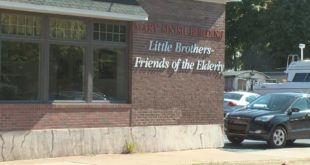A Michigan Tech team has returned home after a recent trip to the nation’s capitol.
 The team of chemical engineering students are working on a process that recycles batteries and have gained some recognition for their efforts.
The team of chemical engineering students are working on a process that recycles batteries and have gained some recognition for their efforts.
People, Prosperity, and the Planet (otherwise known as P3) is a grant program offered by the Environmental Protection Agency, who donates those grants to engineering teams across the country who are all working to solve a common issue of public concern.
The current P3 Focus deals with lithium ion batteries that have reached the end of their service life and are no longer good for much of anything. This particular type of battery is used in our cell phones, tablets, laptops, and even our vehicles.
 “For the auto industry, the cost of making those batteries is quite expensive. How to effectively integrate the waste material into the new system will be the key to this project,” said Dr. Lei Pan, a Chemical Engineering professor at Michigan Tech, whose group of students joined other teams from across the nation in Washington DC, as they showcased their solutions at the USA Science and Engineering Festival. The group demonstrated a mineral separation process that pulls active ingredients from battery components and puts them back in their native state, allowing them to be recycled.
“For the auto industry, the cost of making those batteries is quite expensive. How to effectively integrate the waste material into the new system will be the key to this project,” said Dr. Lei Pan, a Chemical Engineering professor at Michigan Tech, whose group of students joined other teams from across the nation in Washington DC, as they showcased their solutions at the USA Science and Engineering Festival. The group demonstrated a mineral separation process that pulls active ingredients from battery components and puts them back in their native state, allowing them to be recycled.
Pan said, “Our project is to cost effectively develop separation technologies to recover valuable materials from those batteries and reuse it in new batteries.”
The process utilized by Pan’s team pulls from some Keweenaw roots as it uses both a froth floatation method and a gravity separation process similar to what was used in copper mining.
 Team member Trevyn Payne said, “What we’re actually doing here is we’re recycling lithium ion batteries. There’s a copper and an aluminum foil that comes out of these batteries and as we push water through this we get copper which is a more dense particle, and your lighter particle, which is your aluminum, is actually getting pushed up and we are collecting it. So we’re able to collect our copper off the bottom of the teetered bed and the aluminum off of the top of the teetered bed.”
Team member Trevyn Payne said, “What we’re actually doing here is we’re recycling lithium ion batteries. There’s a copper and an aluminum foil that comes out of these batteries and as we push water through this we get copper which is a more dense particle, and your lighter particle, which is your aluminum, is actually getting pushed up and we are collecting it. So we’re able to collect our copper off the bottom of the teetered bed and the aluminum off of the top of the teetered bed.”
Along with copper and aluminum, lithium ion batteries also contain two other finer particles requiring the use of a slightly different method.
“Graphite doesn’t like water and it tends to stay away from water so the graphite will be collected by the bubbles from the top to the bottom and we can just scrape them out, while the majority of the lithium cobalt oxide will remain in the water. That’s hydro separation,” said student Ruiting Zahn, a member of the team that was recently awarded a $15,000 P3 grant for their research.
Additional grants could be in the works for the completion of their project and the second phase of the P3 program.
 Keweenaw Report Your Source for Local News and Sports
Keweenaw Report Your Source for Local News and Sports






